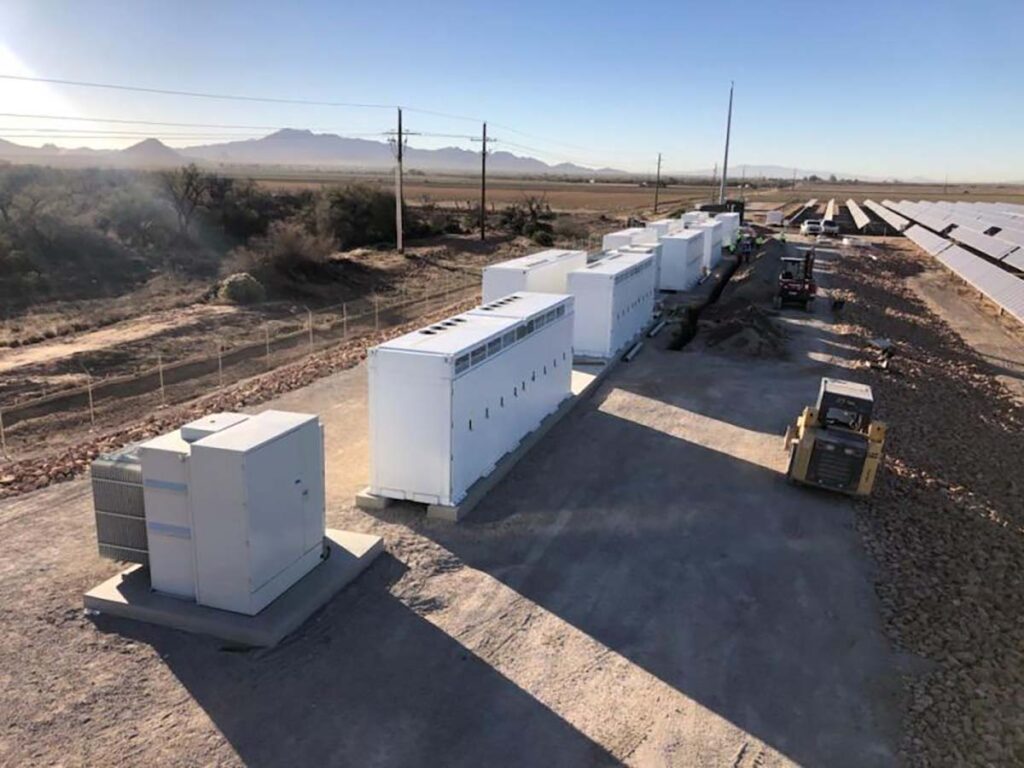
Motivated by its members, an Arizona electric cooperative is taking on its third battery project in two years to boost reliability, reduce carbon emissions, save money and deliver revenue from the wholesale electric power market.
Trico Electric Cooperative, headquartered in Marana, plans to have a new 10-megawatt/40-megawatt-hour battery system operational by end of this year. The facility just south of Tucson will be adjacent to the co-op’s Sahuarita distribution substation. Trico is a partial-requirements member of Arizona Electric Power Cooperative and receives most of its energy and capacity from AEPCO. Trico and AEPCO are working together to develop the Sahuarita battery project.
Trico first installed a 15-MW/30-MWh battery system in 2022 at its Chirreon 10-MW solar and battery facility near a growing retirement community north of Tucson. This spring, the co-op plans to complete installation of an identical system at its Avion 10-MW solar farm in Marana. Both these projects are owned by Trico through subsidiaries.
Trico CEO Brian Heithoff cites members’ demand for innovation and value as the main driver for pursuing energy storage. Industry trends toward decarbonization, decentralization and digitization also prompted the co-op’s projects, he said. Trico has committed to reduce its carbon dioxide emissions by 50% by 2032.
“One of Trico’s core values is innovation, and so we have a history of continually trying to improve ourselves for our members’ benefit,” Heithoff said. “When we serve our members with our battery resources, we reduce our peaking resource needs and often we can free up our other resources to sell to other energy providers.”
With energy storage, Trico can use its excess capacity “to save members money by strategically selling resources into the wholesale power market during non-peak months,” he said.
“A typical deployment strategy might be to discharge the batteries during the evening peak,” Heithoff said. “But if we see that there’s going to be a peak and/or higher prices the next morning, we will hold some of that in the batteries and deploy it at a more beneficial time.”
Heithoff said he expects battery storage to grow in importance and encourages electric co-ops to explore the technology now.
“What is now strategic for us is going to become standard operating procedure in five or 10 years,” he said.
“It’s kind of like computers. When co-ops bought their first desktop computer back in the 90s, that was probably a strategic decision. Then in five to 10 years, almost everybody had a personal computer. What is new in energy storage to a lot of cooperatives is just going be a routine skillset.”
Cathy Cash is a staff writer for NRECA.